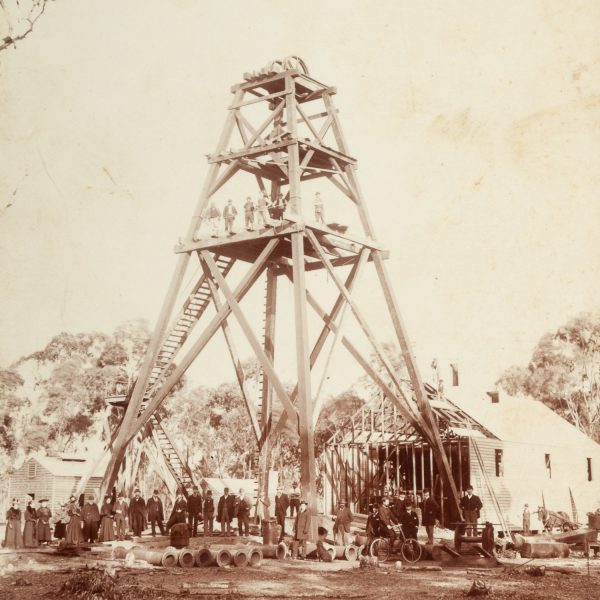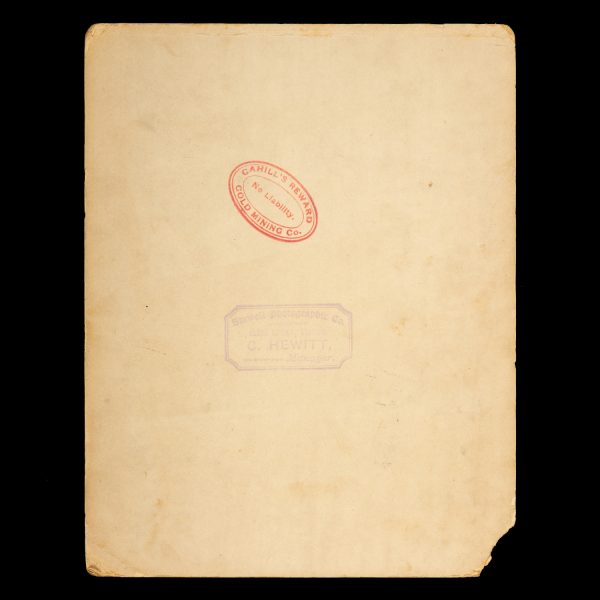# 39465
HEWITT, Charles (1837-1912)
Mine owners and their families at Cahill’s Reward Gold Mining Company’s mine near Stawell, Victoria, 1895.
$950.00 AUD
Sepia-tone gelatin silver print photograph, 205 x 155 mm, laid down on its original mount of thickish board; verso of the mount with the wet stamp (in violet) of ‘Stawell Photographic Co., close Railway Station, C. Hewitt, Manager’, and the wet stamp (in red) of ‘Cahill’s Reward Gold Mining Co.’; a superb print – incredibly sharp, and in excellent condition; the mount has a chipped bottom corner (not affecting the print).
Gold was discovered at Cahill’s Reward, near Stawell in the Wimmera region of Victoria, in 1895. The following initial report was published in The Age, on 13 September 1895:
‘MINING AT STAWELL. STAWELL, Thursday. A sensationally good prospect has been obtained by boring on a lease area known as ” Cahill’s Reward,” situated on Chambers Flat, more than 2 miles west of the John Woods claim, and about the same distance south from the Welshman’s. Thebore was bottomed at 130 feet, and the prospect obtained by the auger was 14 gr. of gold. This discovery indicates that the lead continues down the fiat for a considerable distance, the gold and wash exactly resembling those met with in the John Woods.‘
The lease seems to have been divided between the Cahill’s Reward Gold Mining Company (managed by William Cahill), whose mine is pictured in this apparently unrecorded photograph, probably taken in late 1895 or 1896, during the mine’s early stages, and Kempson’s Company. In 1907 the entire lease was taken over by the Pleasant Creek Alluvial Gold Mining Company.
The photograph, which was taken by the renowned former Melbourne photographer Charles Hewitt, shows an assembly of well-to-do looking men and women gathered around the poppet head. Among them is no doubt William Cahill himself (he is possibly the tall, bearded man in bow-tie, three-piece suit and long overcoat towards the left of the group). The wooden building in the background is still under construction, suggesting a relatively early date of late 1895 or early 1896.
Trove locates no other examples of this historically significant photograph in Australian public collections.









